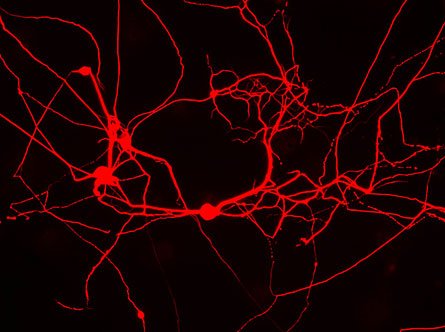
© Thomas Vierbuchen, M. WernigThese neurons were made directly from mouse fibroblasts infected with a three-gene cocktail.
One small step for skin cells could mean one big leap for regenerative medicine. For the first time, scientists have converted adult cells directly into neurons.
If the technique, performed on mouse cells, works for human cells, the achievement may bypass the need to revert a patient's cells to an embryonic state before producing the type of cell needed to repair damage due to disease or injury.
Researchers at Stanford University transformed skin fibroblast cells from mice into working neurons by inserting genes that encode transcription factors. Transcription factors are proteins that help regulate gene activity, usually by turning genes on. To convert skin cells into neurons, only three genes for regulatory proteins needed to be added, the team reported online January 27 in
Nature. The three transcription factors, called Ascl1, Brn2 and Myt1l, normally appear while new neurons are being born.

